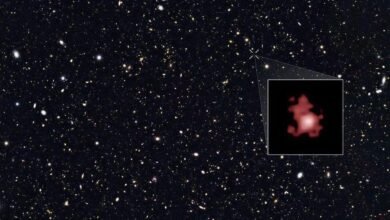What was it like when the Sun was born? | by Ethan Siegel | Starts With A Bang! | Feb, 2024

It took 9.2 billion years of cosmic evolution before our Sun and Solar System even began to form. Such a small event has led to so much.
Although the Universe was only two-thirds of its present age back when the Sun was first forming, things back then were already very similar to how they are today. The Milky Way appeared relatively isolated: the second-largest member of a relatively modest group of galaxies. Low-mass dwarf galaxies would be seen slowly merging and being gobbled up by larger ones, just like they do all over the Universe. And throughout the Milky Way, hundreds of billions of stars are already shining, with gas clumps occasionally contracting along its spiral arms to trigger new waves of star-formation. There are anywhere from tens to hundreds of these regions active in our galaxy at any time.
This process goes on in all gas-rich quiescent galaxies across the Universe, including run-of-the-mill spiral galaxies like our own: stars form slowly, in little bursts, while gas gets drawn into the spiral arms and star-formation propagates outwards from the center in these objects. In one of those regions within the Milky Way, 9.2 billion years after the Big Bang, a cloud of gas collapsed, giving rise to many new stars and likely a star cluster. It was from one of those clumps, that a particular star — our Sun — as well as the planets and the remainder of our Solar System, formed. Here’s what it was like when the Universe made what would eventually become our cosmic home.
The story of star-formation has been occurring for nearly all of cosmic history: except for the first 50–100 million years, the Universe has always been forming stars somewhere, in some way. Gas clouds contract, undergo a process known as core fragmentation, and give rise to stars — about half of which form in singlet systems, while the other half form as members of multi-star systems — for over 99% of the Universe’s history. However, took quite a bit of time and cosmic evolution before stellar systems like ours, with rocky planets, the ingredients for life, and potentially…





